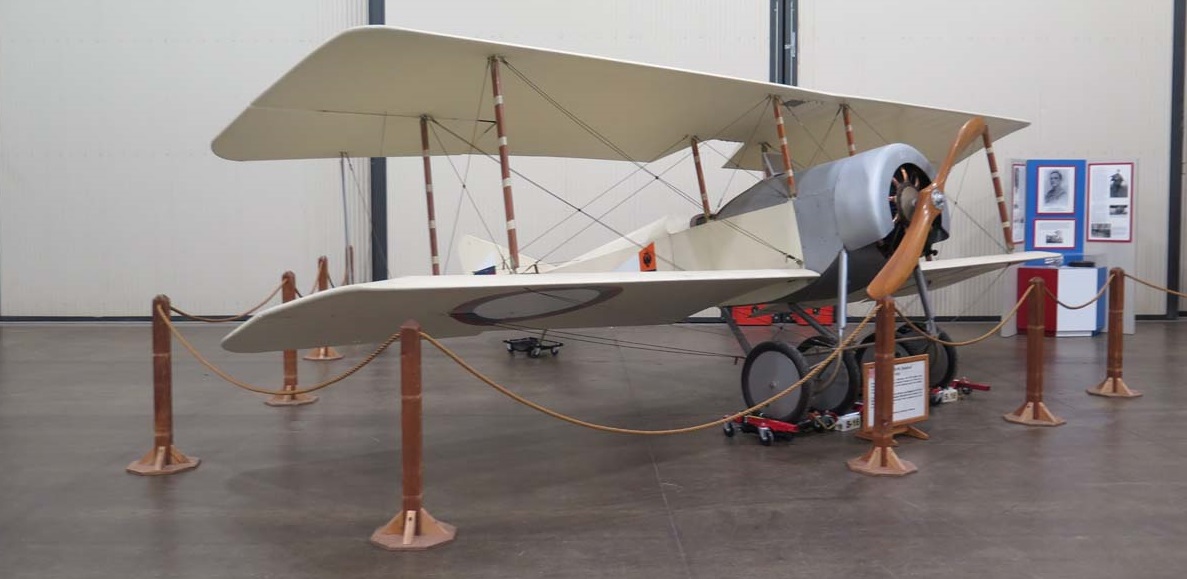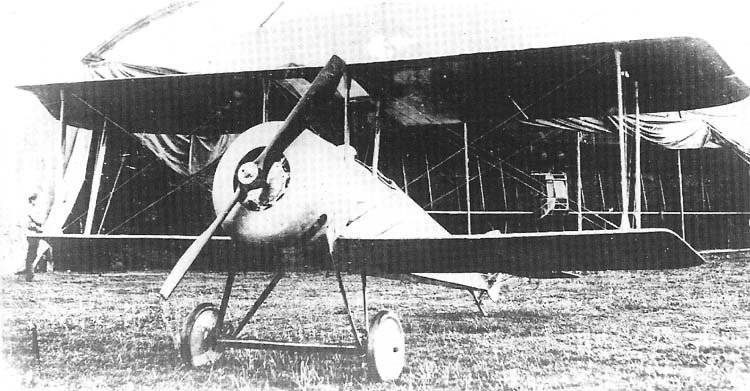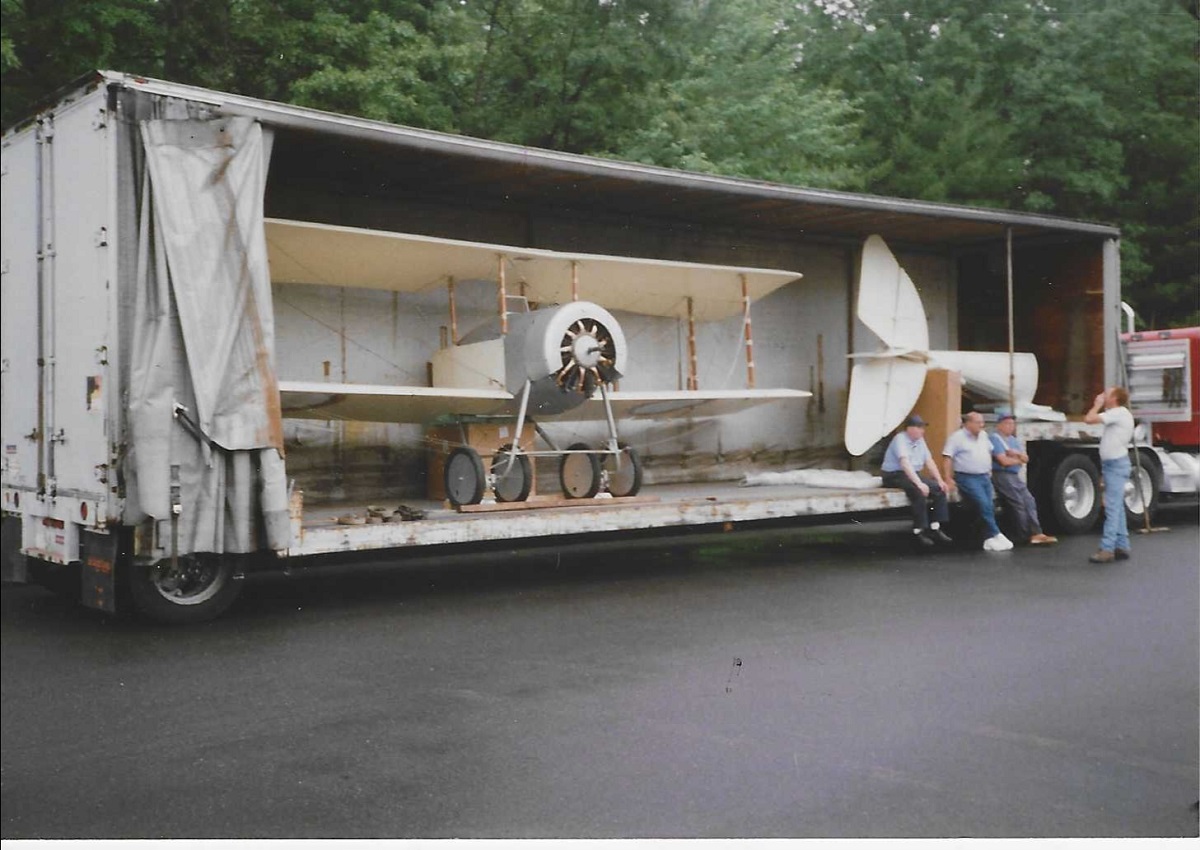
|
Sikorsky S-16 |
 |
||||||||
|---|---|---|---|---|---|---|---|---|---|---|
 |
 |
 |
 |
 |
 |
 |
 |
 |
 |
 The Sikorsky S-16 replica at the New England Air Museum. | |
|
The Sikorsky S-16 was the first production Russian built fighter of WW1. When it first flew in 1915, it was conceived as an Escort for the giant four-engine Il’ya Moromets bombers during the strategic raids on East Prussia during WW1. It was also used as a Fighter/Scout for the EKV (Squadron of Flying Ships). The first flights were with the Czar’s air force in WW1 and the last flights were with the Bolsheviks during the Russian civil war.
Inspired by the Sopwith Tabloid, the S-16 design was completed by Igor Sikorsky in October 1914, but unlike the Tabloid which used wing-warping for lateral control, the S-16, like all of Sikorsky’s airplanes, used ailerons for control and was equipped with four wheels to deal with soft soggy soils. The landing gear could also be switched to skis for winter use. It was powered by several different engines including 110 hp Le Rhône or the 80 hp Gnome. Most of the S-16s were powered with the Gnome, but the more powerful Le Rhône was preferred. It was the one of the first fighters to have a synchronized machine gun firing through the propeller arc, but the synchronization mechanism for the Vickers or Maxim gun was subject to jamming and some S-16s were equipped with an extra Lewis gun installed on the upper wing. The S-16 was built by the R-BVZ (Russian Baltic Wagon Works) at St. Petersburg and Riga with Sikorsky as the Chief Designer. Sources for the number of S-16s constructed varies, but most likely the total number of aircraft built was 33. The reason for the small number of S-16s built was that R-BVZ concentrated on building Nieport and Farman aircraft under license that were preferred by the Russian War Department. Throughout the development of the S-16, there was a crippling shortage of engines. The import of engines from France became scarce due to the war. The original engines called for either the 100 hp French built Le Rhône or the lower powered 80 hp Gnome-2 engine. Le Rhône engines were more desirable, as they were more powerful and considered more reliable and consumed less oil and gas. Since they were built in France, they were hard to come by and most S-16s were powered by the Russian built 80 hp Gnome. (The Gnome division was started in Moscow in 1913 and produced five to ten engines/month.) In December 1915 and early 1916, seven S-16s were delivered to the field, but by this time they were outclassed by the Fokker D.II and D.III. The S-17 built in 1916 was an armored version of the S-16 but it did not go into production.
When properly equipped with the right equipment the S-16 was a formidable aircraft. On March 17, 1916, an S-16 (No. 205) was delivered to the Valukovski 33rd Corps Squadron. It was powered by a superior Le Rhône engine and a Vickers machine gun and was the only S-16 that was powered by a Le Rhône engine. The aircraft was assigned to Lieutenant Konstantin K. Vakulovsky, one of Russia’s top aces and since it was properly equipped, he reported no issues with the S-16. On March 26th he intercepted a German scout plane, but was not to repeat this victory. On his next flight, during a reconnaissance mission, he was shot down by Russian artillery, who mistook the S-16 for a German Fokker. The aircraft was severely damaged and Vakulovsky was knocked unconscious, but he was able to regain consciousness and glide back to safety. In the region of Galicia on April 27, 1916, Vladimirovich Gilsher in a S-16, shot down an Austrian airplane. Sikorsky was unable to concentrate on the S-16 because most of his resources was devoted to the building of the four-engine Il’ya Moromets. He made several attempts to develop the S-17 and twin-engine S-18, but these efforts were abandoned. The S-20 was an improved version of the S-16, powered by either a 100 hp Gnome-Monosoupaupe or 120 hp Le Rhône engine. The S-20 was an outstanding aircraft with the speed and agility of the Nieuports, flying at 118 mph and able to climb 1,000 ft/min. However it only reached the experimental stage and never went into production. Due to the unavailability of proper engines and machine guns, the S-16 was later relegated to pilot training.

The Sikorsky S-20.
During the Russian Revolution, Sikorsky had left Russia and in the newly formed Soviet Union, Sikorsky never officially never existed, and his aircraft designs were classified as secret. However, an admiring Russian aircraft community kept his works alive. In the Stalinist era, the S-16 was incorrectly known as the RBVZ-16. After the fall of the Soviet Union in 1989, Vadim Mikheyev, a friend of Igor Sikorsky’s son Sergei, and author of Sikorsky S-16, met with members of a Russian aviation history club. The club consisted of engineers working on the Soviet “Buran” space shuttle project. Mikheyev convinced them to build a replica of the S-16 after the discovery of original S-16 production drawings. The wings and control surfaces of the S-16 replica were made of wood and fabric, but due to the unavailability of Oregon spruce, which was the original wood used in the fuselage, the fuselage was instead constructed with stainless steel tubing. Landing gear was fabricated, and a vintage Vickers machine gun was installed. After the Burna space shuttle project was abandoned, five unfinished airframes in various stages of construction went into storage. The S-16 was about ¾ complete and was stored in a warehouse near Moscow. Vadim Mikheyev had kept track of the S-16 and in 1997, the Sikorsky Historical Archives was able to procure the S-16 replica airframe. Volunteers from the Stratford based VS-44 volunteers completed the restoration. During storage and shipping, some parts were damaged, requiring the ailerons and landing gear to be rebuilt. The fuselage was partly twisted so it was decided not to restore it to airworthy condition and completed as static display only. A 80 hp Le Rhone engine was obtained from the Old Rhinebeck Aerodrome and fitted to the airframe. Longer lasting Dacron was used for the fabric covering rather than the original linen. The restoration was completed in 1997 and the Sikorsky Historical Archives agreed to loan the S-16 to the NEAM for an indefinite period.


The Sikorsky S-16 replica arrives at the NEAM in the Spring of 1998. Photos: NEAM Ramsay Research Library. |
| Specifications: | ||||||
|---|---|---|---|---|---|---|
| Sikorsky S-16 | ||||||
| Dimensions: | ||||||
| S-16 | S-16 | S-16 | S-16sep | S-16a | S-16-3 | |
| Factory No.: | 154 | 155 | 156 | 201-215 | 210 | 246-260 |
| Upper Wing Span: | 8.3 m | 8.3 m | 8.8 m | 8.8 m | 8.4 m | |
| Lower Wing Span: | 8.3 m | 8.3 m | 7.9 m | 7.9 m | 7.9 m | |
| Wing Area: | 22.76 m2 | 22.76 m2 | 27.35 m2 | 25.36 m2 | 25.36 m2 | |
| Length: | 7.2 m | 7.2 m | 7.2 m | 7 m | 7 m | 7 m |
| Weights: | ||||||
| Empty: | 392 kg | 407 kg | 394 kg | 420 kg | 455 kg | |
| Gross: | 662 kg | 676 kg | 664 kg | 690 kg | 650 kg | |
| Useful Load: | 270 kg | 270 kg | 270 kg | 270 kg | 195 kg | 195 kg |
| Performance: | ||||||
| Max Speed: | 144 km/hr | 144 km/hr | 126 km/hr | 153 km/hr | ||
| Powerplant: | ||||||
| 80 hp Gnome | 80 hp Gnome | 60 hp Kalep | 80 hp Gnome | 100 hp Gnome Monosoupape | 100 hp Gnome Monosoupape | |
Sources:
|
1. Sikorsky S-16 Replica. New England Air Museum. August 8, 1998. 2. Sikorsky Scouts. J. P. Alexander. National Air & Space Museum. April 1964. 3. Igor Sikorsky. The Story of the Winged S. New York: Dodd Mead and Company Inc., 1941. 65. 4. George Lee Stamper Jr. The Sikorsky S-16 and Russian Aviation During the Great War. Thesis submitted to the University of Georgia. 1995. 5. Round the Museum. CAHA News Letter. October 1998. 9. 6. Vadim Mikheyev. Sikorsky S-16. Stratford, CT: Flying Machines Press, 1997. 7. History of Russian Aviation. RBVZ-S-20 Sikorsky. https://en.topwar.ru/16068-istoriya-russkoy-aviacii-rbvz-s-20.html. July 5, 2012. |
Return To Aircraft Index.
© Larry Dwyer. The Aviation History Online Museum.
All rights reserved.
Created June 9, 2024.